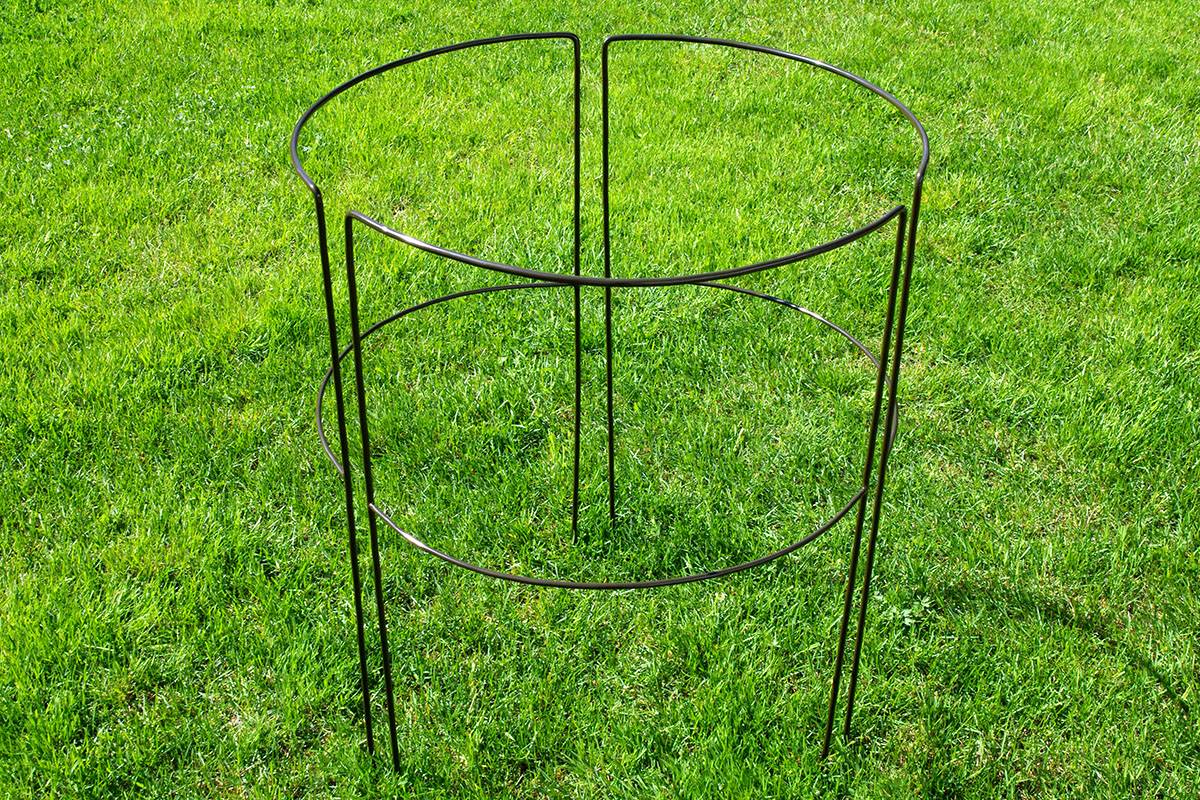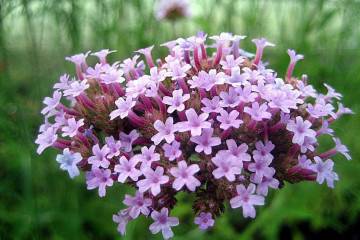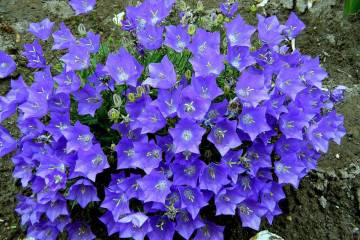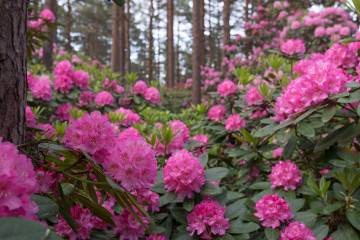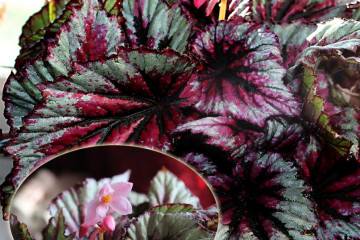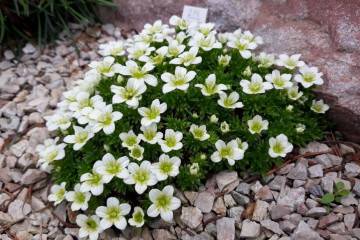Gypsophila paniculata: planting and care
Content:
Gypsophila paniculata can decorate a garden or flower bed. The flowering bush resembles a fluffy white cloud. It is suitable for any landscape design, and cut branches look great in bouquets.
Description and popular varieties
Gypsophila belongs to the Clove family. Found naturally in Asia, North America, Southern Europe. In natural conditions, it grows in rocky places and dry hills.
Gypsophila white paniculate can grow up to 120 cm. The bush is spherical, the branches are thin, the leaves are elongated with pointed tips.
The most popular varieties:
- Bristol fairies. The bush reaches a height of 1 m, flowers are small up to 1.2 cm in diameter, white double;
- White festival flyer is a compact shrub that grows up to 45 cm. Flowers 5 mm in diameter are white semi-double;
- The compact of captivity. It grows up to 50 cm, and the bush grows only up to 60 cm wide. The flowers are small, 5 mm in diameter;
- Snow flakes. The bush reaches 1.5 m in diameter, the shape of the bush is round. It grows in height up to 1.2 m. White double flowers, 1 cm in diameter;
- Flamingo. It grows up to 1.2 m. The shape of the bush is spherical, the flowers do not exceed 6 mm in diameter, they are painted in a pink tint.
Application in bouquets and landscaping
Pink or white gypsophila is used in wedding floristry. One twig can be stuck into the groom's boutonniere. Long and thin branches are suitable for creating a wreath.
Gypsophila paniculata refers to perennial shrubs. In the garden, it can be planted in the middle of the lawn or planted along the boundaries of the site. In landscape design, it is used to fill a mixborder.
Gypsophila looks beautiful as a ground cover plant. With its help, they decorate slides, rocky walls, garden stones.
Diseases and pests
Gypsophila paniculata needs proper planting and care, otherwise it will not take root. If the bush withers, its leaves turn yellow, and the flowers fall off, this is a sign of waterlogging of the soil. In this case, the damaged areas are cut off, and the soil is spilled with Bordeaux liquid.
To prevent the appearance of rust, gypsophila paniculata is treated with a fungicide, for example, oxychom.
Of the pests for perennials, nematodes are dangerous. Signs of infection:
- stunting;
- thickenings appear on the branches;
- the leaves turn brown.
Parasites live in the plant all year round and they tolerate winter well. Therefore, you need to use phosphamide for processing. They are sprayed with bushes once a week. If this does not help, then dug out the gypsophila paniculata and rinse the roots in hot water.
The plant is popular with snails and slugs. Therefore, the soil is treated with thunderstorm or lightning agents. You can sprinkle a little lime or tobacco on the ground.
How to collect seeds
Gypsophila paniculata can be grown in different ways. In autumn, after flowering, small dry bolls appear on the bushes. They contain seeds that remain viable for two years.
Seeds are planted in April-May in separate small containers.For this, a universal soil mixture is used. The first shoots appear in 2-3 weeks.
When to plant
For young seedlings, they are kept for 13 hours daylight. They are planted in open ground after 2-3 leaves appear on the sprout. They need to be planted at the rate of 3 bush per 1 m².
Landing in open ground
The success of growing gypsophila paniculata depends on the correct choice of land. It should not contain an admixture of clay, a neutral soil is better suited.
It is better to choose a site that is brightly lit, since the bushes are photophilous. Before planting, the soil is moistened, after which the bushes are planted at a distance of 30-40 cm from each other.
Sometimes the seeds are planted directly into open ground. In this case, this is done at the end of April. One seed is placed in the hole, after which it is lightly sprinkled with earth. From above, the seedlings are covered with dense polyethylene.
Another option is growing in a greenhouse. The sprouts are transplanted into open ground in early summer.
Seedling care
Gypsophila paniculata is highly resistant to pests and diseases. The plant does not tolerate drying out of the soil, so you need to water abundantly.
Flowers do not need feeding. Nutritious soil and a well-lit area create the right conditions for growth. On poor soil, you can use mullein infusion once a month or complex fertilizers. Fresh manure must not be used, as it causes root burns.
Once a month, you need to loosen the top layer of soil. To do this, take a small rake and carefully dig out the soil around the bush, this will provide oxygen access to the roots.
For the correct formation of the crown, you can cut the branches. You need to remove weak shoots, too long and damaged. With this procedure, you can make a beautiful even spherical shape of the bush.
Preparing for winter
Gypsophila belongs to perennial shrubs, so in the fall it needs to be prepared for the frost period.
It is necessary to wait until the bush is completely dry. It is freed from seed pods, after which all branches are cut off at the root. It is important that the plant is dry, otherwise root rot will develop and the gypsophila will die.
In a snowy winter, the bush will easily tolerate freezing temperatures, but it is better to mulch the soil. For this, the soil is sprinkled with peat or humus. Young seedlings are covered with spruce branches or dry leaves.
Supports for an adult plant
The gypsophila cloud needs support to create the visual effect. The branches are laid on special supports that make the bushes airy and fluffy.
It is better to use a U-shaped trellis to support the branches. For this, three vertical columns are placed on three sides of the bush. Their height should be the same as that of the plant. A rope or wire is pulled between them. The distance between the rows must be maintained at 30 cm. The lower shoots are neatly tied to the rope. The advantage of this design is that one part remains free, so you can safely take care of the bush.
Another option is a slingshot support. It can be used when several branches need to be supported. To create, you need to cut V-shaped branches from the tree, removing unnecessary twigs and twigs. The slingshot is driven into the ground, the shoot is placed between the branches. With this method of attachment, no additional fixation is required.
A round support can be made from thick wire. To do this, take three meters of wire (with a diameter of at least 6 mm), after which a circle is formed from it. Its size depends on the thickness of the bush. The material should not squeeze the branches too much, only slightly collect them. The ends are driven into the ground at right angles.
Growing errors
Gypsophila paniculata is unpretentious and does not require special care. Growth problems or flowering occur when the cultivation technology is violated. If the bushes are very elongated and hardly bloom, this means that they are too close to each other. Young plants look small, and budding growers may try to plant them closer. As a result, after 2-3 years they begin to strongly interfere with each other. Therefore, they need to be transplanted to different sites.
To do this, in the fall, the plant is cut off (after it dries), and the root system is carefully dug up and transferred to another place. A drainage layer is laid at the bottom of the hole and a seedling is placed on top.
With slightly acidic soil, gypsophila paniculata almost does not bloom and grows poorly. Therefore, a small amount of lime must be added to the soil. It is diluted in water or simply sprinkled with soil powder.
If there is no drainage, root rot may appear. Gypsophila does not like dry land, but excessive moisture will harm it. Therefore, it is necessary to control the watering of the soil.
Watering is necessary only strictly at the root, without affecting the branches with flowers. If the bush begins to dry in spring or summer, then this is a sign of a lack of moisture. The damaged areas need to be removed and the number of irrigations adjusted.
The flowering period of gypsophila is from June to September. If this does not happen, then it may be a lack of lighting. It is necessary to wait for autumn and choose a new place for transplanting. You cannot place a bush under a tree or in the shade.
Gypsophila paniculata blooms beautifully and does not require special care. Twigs with flowers can be used to create bouquets and decorate the interior. It is necessary to plant strictly according to the rules, otherwise the flowers will die in the very first year, and do not start.



